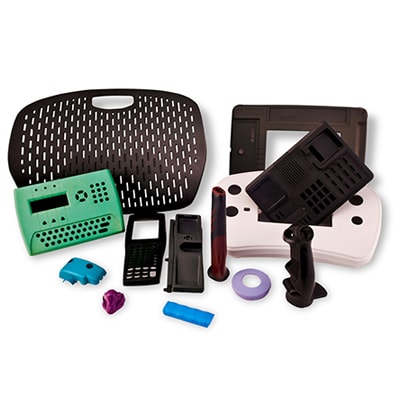
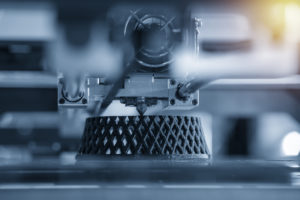
Moving from prototype to production doesn't need to happen all at once. It is often advantageous to perform additional fit and function testing in-between stages of development. Doing so can help to verify that the final product will perform exactly as intended. Urethane casting and RTV molding can help fill this gap, offering an affordable way to trial components before production. Cast urethane components closely resemble their production-quality counterparts in form, color, and texture, but they are more cost-effective to produce in low volumes.
At Advanced Prototype Molding (APM), we include urethane molding in our broad array of rapid prototyping services to help customers take their designs from concept to full-scale production. Urethane casting complements our other prototyping and production services, which also include injection molding, 3D printing, rotational molding, CNC machining, and stamping. Our expert team can help you determine where urethane casting fits into your individualized production process.
Urethane casting is the process of molding urethane polymers into rigid or flexible components. Once set, urethane closely mimics the properties of production-quality polymers, making it an ideal material for advanced prototyping. We typically employ room-temperature vulcanization (RTV) molding to cast urethane components, which involves pouring urethane into a silicone mold. These silicone molds can range from simple to highly complex, so they facilitate the production of virtually any desired part geometry.
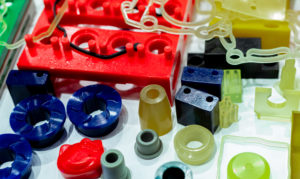
The urethane casting process resembles plastic injection molding in many ways, but there are key distinctions. For instance, urethane casting via RTV molding uses a flexible silicone mold rather than hard plastic tooling. These silicone molds are affordable and easy to produce, making them ideal for prototyping and its potential for frequent design changes.
The urethane casting process involves the following key steps:
1: Produce a master pattern. The first step in urethane casting is to create a precise 3D model of the component. This pattern will be used to create the initial silicone mold, and it will be kept as a reference in case the mold needs to be replaced. Silicone molds wear out more quickly than hard plastic ones, but the master pattern allows for easy replacements. This pattern may be 3D-printed, or it might be formed using CNC machining or another technique. What matters most is that it accurately represent the geometry of the final product.
2: Create the silicone mold. With a master pattern, creating a silicone mold is as simple as encasing that model in silicone. Once hardened, a technician slices the silicone in half and sets aside the pattern. The mold is now ready for casting.
3: Prepare the urethane. Urethane comes in two liquid phases that must be combined prior to molding. Different types of urethane suit different projects, depending on the desired rigidity.
4: Pour urethane into the mold. As in plastic injection molding, the next step is to fill the cavity with the liquid polymer.
5: Fill the voids. Simply pouring urethane into the mold is typically not sufficient to fill all the empty spaces in the mold. Applying a combination of heat and vacuum pressure to the mold can help remove all excess air and ensure that the urethane fully conforms to the cavities in the silicone.
6: Remove the component. The urethane will slowly set inside the mold, at which point the two halves can be separated and the hardened plastic removed.
7: Repeat. The process continues until all desired models are hardened. At this point, any desired finishing processes can take place.
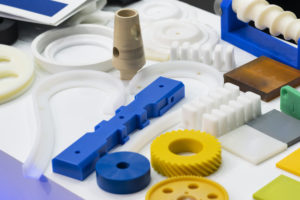
Urethane casting is an excellent choice for prototyping in many respects, and it can also be used for some production runs. Its advantages include:
Urethane casting is popular due to its flexibility and affordability, and its applications are not limited to a single industry. Many sectors have uses for urethane molds and prototypes, such as:
Specific applications include almost any product that can be tested using rigid, flexible, or elastic polymers. Some examples include:
The experts at APM can help determine whether urethane casting is an appropriate choice for your project.
Urethane casting provides an ideal combination of accuracy and affordability, making it a highly accessible option for prototyping. At Advanced Prototype Molding, we rely on RTV molding and urethane casting services to quickly craft prototypes, fit and function testing parts, and even final production components. We draw on more than 40 years of experience to guide clients through the production process, beginning with a free design consultation and ending with a product or prototype in-hand.
To learn more about how APM's decades of experience can benefit your project, contact us or request a quote today.


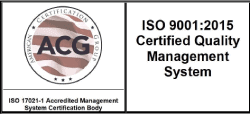
ADVANCED PROTOTYPE MOLDING
1520 N Old Rand Road Wauconda, IL 60084
Tel: 847-202-4200
Fax: 847-202-4270
sales@advancedprototype.com
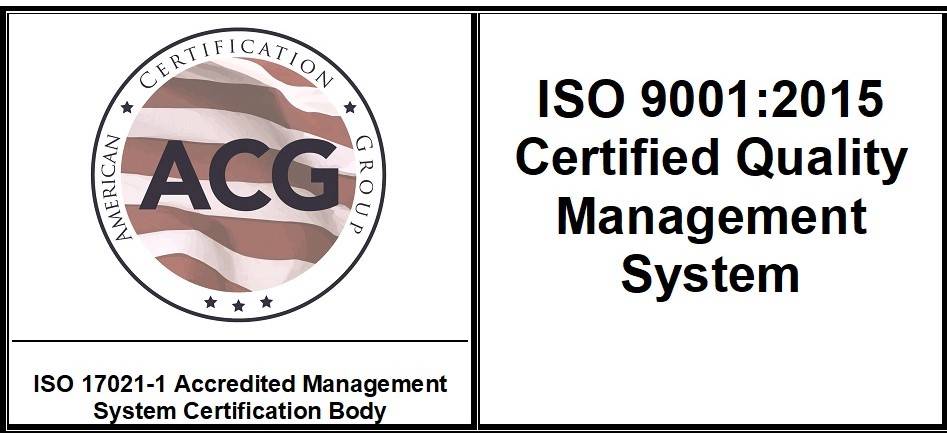
ADVANCED PROTOTYPE MOLDING
1520 N Old Rand Road Wauconda, IL 60084
Tel: 847-202-4200
Fax: 847-202-4270
sales@advancedprototype.com